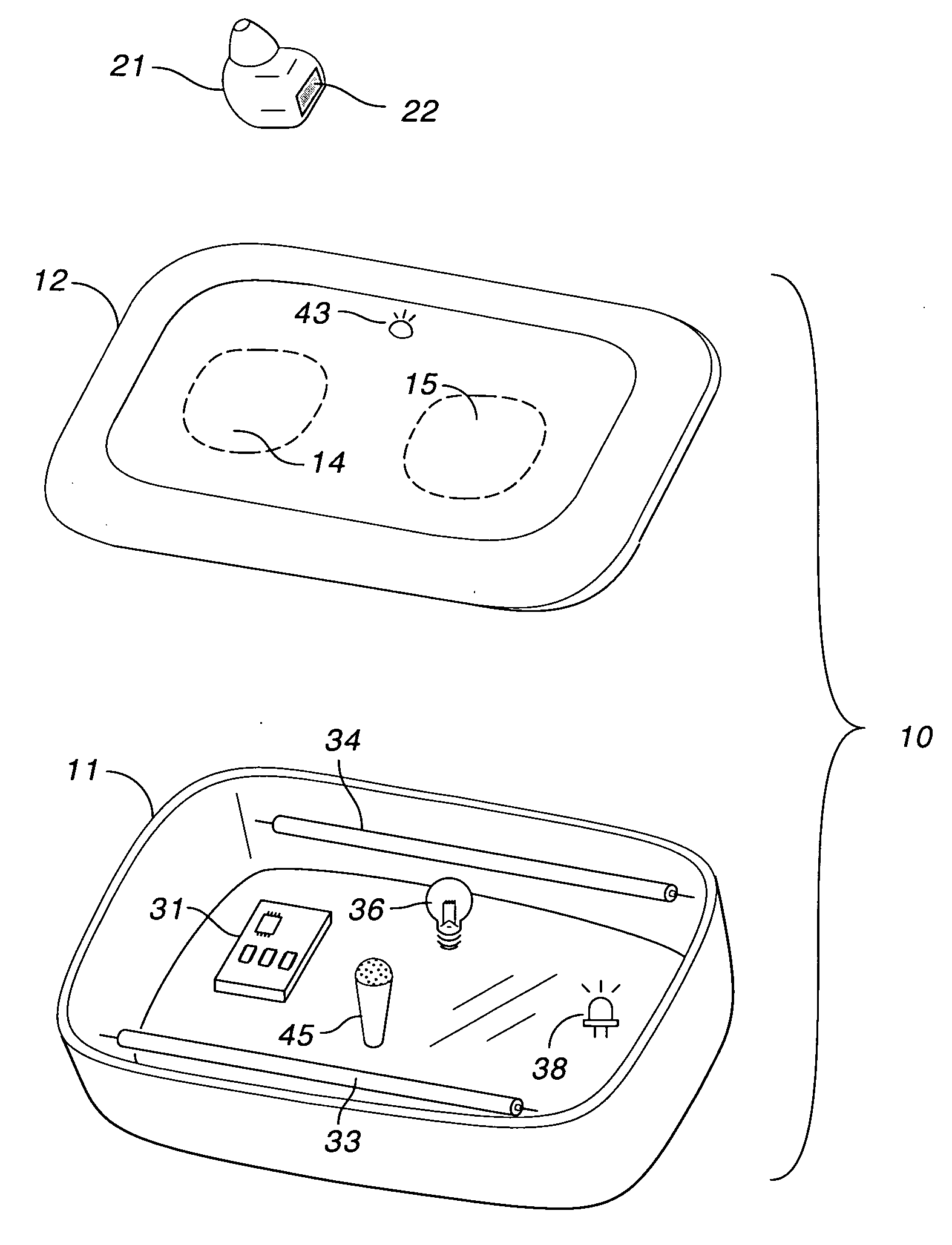Maintenance station for hearing aid
a technology for maintaining stations and hearing aids, applied in the field of maintenance stations, can solve the problems inconvenience of having to replace batteries, and inconvenient charging
- Summary
- Abstract
- Description
- Claims
- Application Information
AI Technical Summary
Benefits of technology
Problems solved by technology
Method used
Image
Examples
Embodiment Construction
[0014]In the FIGURE, maintenance station 10 includes a housing having base 11 and cover 12 of suitable shape and volume for containing one or more hearing aids and the apparatus for providing maintenance. Cover 12 optionally includes apertures 14 and 15 that can receive hearing aids and hold them in sockets (not shown) attached to the cover. The housing is opaque to ultraviolet radiation.
[0015]Hearing aid 21 includes photovoltaic cell 22 on or in the case thereof. If within, the photovoltaic cell is located adjacent a translucent portion of the case. Photovoltaic cell 22 provides power for hearing aid 21 and for charging a battery (not shown) within hearing aid 21.
[0016]Base 11 includes circuit board 31 for operating the maintenance station. Lamp 33 and lamp 34 are preferably miniature cold cathode fluorescent lamps (CCFL), such as commercially available from JKL Components Corporation. Lamp 36 is preferably an incandescent lamp. At least one of lamps 33 and 34 emits ultraviolet lig...
PUM
 Login to View More
Login to View More Abstract
Description
Claims
Application Information
 Login to View More
Login to View More - R&D
- Intellectual Property
- Life Sciences
- Materials
- Tech Scout
- Unparalleled Data Quality
- Higher Quality Content
- 60% Fewer Hallucinations
Browse by: Latest US Patents, China's latest patents, Technical Efficacy Thesaurus, Application Domain, Technology Topic, Popular Technical Reports.
© 2025 PatSnap. All rights reserved.Legal|Privacy policy|Modern Slavery Act Transparency Statement|Sitemap|About US| Contact US: help@patsnap.com


